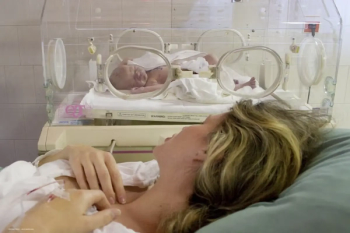
Q&A: Sunir J. Garg, MD, shares endophthalmitis insights at AAO 2025
The professor from Wills Eye Hospital in Philadelphia, Pennsylvania, explained why it's time to retire the term "sterile" when addressing culture-negative endophthalmitis
At the 2025 annual meeting of the American Academy of Ophthalmology (AAO), Sunir J. Garg, MD, spoke to the Eye Care Network about his presentation. Dr Garg is a professor of ophthalmology at Wills Eye Hospital and a partner with Mid-Atlantic Retina in Philadelphia, Pennsylvania. Titled "Endophthalmitis: Sterile or not,” his lecture differentiated between different forms of endophthalmitis and challenged the existing dialogue around “sterile” as a characterisation of the condition.
In this Q&A, Dr Garg highlights his key takeaways, and when clinicians may be able to apply them in the field.
Editor's note: This transcript has been lightly edited for clarity.
Eye Care Network: What did you speak about during this presentation at the 2025 AAO meeting?
Sunir J. Garg, MD: So I talked today about endophthalmitis, whether it's sterile or not. I'll encourage us to actually get rid of the term "sterile," because there's not a great definition for it. I think a better term is to call patients either culture-negative endophthalmitis, which, to me, means I know it's endophthalmitis, I just haven't been able to figure out what organism. Versus a non-infectious inflammatory response, which we see after any intervention, really.
ECN: When might clinicians encounter endophthalmitis?
SG: We know that we can see it after anti-VEGF injections, after steroid injections, or even after cataract surgery. When patients present with a non-infectious inflammatory response, usually they'll call a day or 2 after the procedure, and they'll say, you know, "My vision is blurry, I have some redness, I have some pain," and we'll bring them in right away. When we examine the eye, in addition to the injection, they'll often have a mild anterior chamber reaction and perhaps a mild vitreous reaction, but they tend not to have any fibrin, and they should be incredibly responsive to topical steroids. But sometimes it's a little bit difficult to differentiate a non-infectious endophthalmitis from an inflammatory response.
ECN: What do you hope clinicians take away from this presentation?
SG: So the main take-home point from that is just see the patient back in a few hours. If they're calling in with what's potentially infectious endophthalmitis a day or 2 after treatment, it's going to be a very virulent organism, and that organism is going to get worse hour by hour, versus a non-infectious inflammatory response, really should just smolder. So I see a patient first thing in the morning, I'll start them on aggressive topical steroids. I'll have them go do some stuff around the neighborhood, and then come back to me around lunchtime. And if it's stable, I'm much more confident that's an inflammatory response and not infectious endophthalmitis.
Newsletter
Get the essential updates shaping the future of pharma manufacturing and compliance—subscribe today to Pharmaceutical Technology and never miss a breakthrough.












































